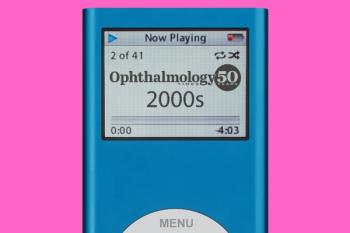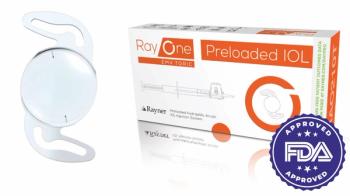
Tips for tackling conjunctivitis
Utilizing a red eye protocol can be helpful in the determination of whether conjunctivitis is allergic, viral, or bacterial.
Take-home
Utilizing a red eye protocol can be helpful in the determination of whether conjunctivitis is allergic, viral, or bacterial.
Dr. Rajpal
By Rajesh K. Rajpal, MD; Special to Ophthalmology Times
As clinicians at a referral cornea practice, my colleagues and I treat many patients who present with complaints of a red eye. During allergy season, when allergic conjunctivitis is more prevalent, it is beneficial to implement a protocol that differentiates among allergic, adenoviral, and bacterial conjunctivitis, as the signs and symptoms are often similar.
Every member of our staff plays an integral role in executing a red eye protocol for conjunctivitis built around the point-of-care diagnostic test (AdenoPlus, Nicox). When patients present with red eye, they are checked in by the staff at the front desk. The front-desk staff alerts the technician, and the technician escorts the patient from the waiting room to an isolated examination room in an effort to minimize the chances of a potentially infectious patient exposing others in the office.
The concept is the same as a pediatrician’s office that utilizes a sick and a well-child waiting room. When the technician examines the patient, he or she is careful not to interact with the patient in a way that spreads contagion, such as when shaking hands. If the technician suspects the patient is contagious, he or she alerts the clinician and obtains permission to proceed with diagnostic testing, prior to applying any drops or using any instruments that may touch the patient’s eye.
If the clinician determines that the patient may be infectious, the clinician will instruct the technician to perform the point-of-care diagnostic test to rule out or confirm the presence of adenoviral conjunctivitis. The technician administers the test, waits 10 minutes for results to appear, and informs the clinician of the results. The clinician conducts a full examination on the front surface of the patient’s eye to determine that there aren’t any other contributing factors to the patient’s symptoms.
If the test is negative for adenoviral conjunctivitis, then the clinician determines clinically the etiology of the patient’s symptoms. Most commonly, the patient will then have either bacterial or allergic conjunctivitis. The decision-making processing in terms of diagnosis is then based on the patient’s medical history and the clinical findings.
Bacterial, viral or allergic?
Bacterial. If a patient’s history and medical findings are more suggestive of bacterial conjunctivitis, then we typically prescribe a topical antibiotic, which is most commonly a flouroquinolone. If the patient shows signs of lid involvement or cellulitis, we may prescribe oral antibiotics.
Viral. If the diagnostic test is positive for adenoviral conjunctivitis, we instruct the patient on ways to prevent contagion.
Most commonly, we suggest symptomatic treatment-such as artificial tears and cool compresses-to make the patient more comfortable. If the patient is experiencing a severe case, we may prescribe a mild steroid. Preliminary clinical data has shown that prescribing ganciclovir (Zirgan, Bausch + Lomb) may be beneficial.1
There has also been some evidence that a diluted form of betadine may be useful.
Finally, if there are any concerns that the patient may have a dual etiology of adenoviral conjunctivitis and something else, then we may prescribe an antibiotic, but that is generally not necessary.
Allergic. Allergic conjunctivitis is often easier to differentiate from viral and bacterial because the vast majority of patients who have allergic conjunctivitis complain of itching, which often helps with diagnosis. That said, itching can also be present with viral conjunctivitis, so we typically conclude that the red eye is allergic in nature once a negative diagnostic test result is confirmed. If allergic conjunctivitis is diagnosed, we review the framework of the different medications used to treat allergies, such as antihistamine decongestant combinations, mast cell stabilizers, and anti-allergy compresses.
Treatment could be as simple as decreasing exposure to the allergen, but that may not always be an easy solution for the patient. We suggest symptomatic relief in the form of artificial tears and cool compresses to decrease the itching and swelling. We also consider the possible negative effects of over-the-counter medication, such as decongestants and antihistamines. For example, oral agents can have a drying effect on the ocular surface.
Sometimes patients can have allergic conjunctivitis with other findings, such as dry eye. In that case, cyclosporine (Restasis, Allergan) may be beneficial in improving the ocular surface.
If a patient has severe symptoms, we prescribe a topical steroid as well. Most commonly, I prescribe loteprednol etabonate ophthalmic suspension 0.2% (Alrex, Bausch + Lomb), because it is relatively mild. For severe cases, loteprednol etabonate ophthalmic gel 0.5% (Lotemax, Bausch + Lomb) is more appropriate.
If a patient has seasonal allergic conjunctivitis, he or she is better suited for a short-term treatment option. If a patient has perennial allergic conjunctivitis, I prescribe the steroid only when symptoms are present.
Making the call
Based on what is seen clinically, it can often be challenging to make a final determination of whether conjunctivitis is allergic, viral, or bacterial. The most important aspect of a red eye protocol is that it gives patients a clear direction on how to move forward, whether that means returning to work or school or being educated on how they can prevent spreading the infection to others.
If the diagnostic test is positive, they may be out of work or school for 10 to 14 days, but if it is negative then they can get back to their lives more quickly. It is not just the positive result that we benefit from, but the negative result benefits us even more. It ultimately gives patients the green light to return to their normal routine.
Conclusion
One of the most positive elements of utilizing a red eye protocol has been that patients perceive it as something that puts our practice at the forefront of high technology. It increases the credibility and respect that our patients have for us.
They recognize that their pediatricians and primary-care providers are utilizing rapid testing in their practices, and they appreciate that we are giving them more information as well. We are providing a higher level of care with high quality, and that fits into our overall mission in all aspects of our practice.
Reference
Pepose JS, Price FW Jr., Goldberg D, et al. A placebo controlled comparison of topical Zirgan versus Genteal gel for the treatment of adenovirus conjunctivitis.
Rajesh K. Rajpal, MD, is medical director, Cornea Consultants PC, McLean, VA, and clinical associate professor, Georgetown University Medical Center, Washington, DC. Readers may contact him at 703/287-4122 or
Newsletter
Don’t miss out—get Ophthalmology Times updates on the latest clinical advancements and expert interviews, straight to your inbox.






















































.png)


